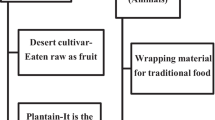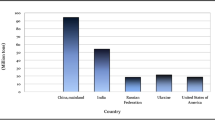Abstract
In the past few years, the global demand in bioethanol has been continuously rising due to its economic importance. Several countries have exerted considerable efforts in the production of bioethanol as a transport fuel from different feedstocks and started to practice consuming this environment-friendly fuel. Thailand is now one of the top consumers of bioethanol in South East Asia and belongs to the top 5 leading countries in producing pineapples. Production of bioethanol from pineapple wastes, especially the fruit peels, became possible. In this study, the effects of alkaline pretreatment and microbial hydrolysis through Trichoderma harzianum of pineapple fruit peel were evaluated. Among the four concentrations of NaOH, the 0% NaOH gave the highest total and reducing sugar (458.44 ± 13.6 g/L and 279.67 ± 21 g/L) than 1%, 3%, and 5% concentrations of NaOH. Samples pretreated with 0% NaOH were subjected to microbial hydrolysis which showed an increase in reducing sugar of the samples. At the end of the experiment, a bioethanol yield of 5.98 ± 1.01 g/L from pineapple fruit peel was successfully produced at 48 h of fermentation.


Similar content being viewed by others
References
Altendorf S (2017) Global prospects for major tropical fruits: short-term outlook, challenges and opportunities in a vibrant global marketplace. Retrieved from http://www.fao.org/fileadmin/templates/est/COMM_MARKETS_MONITORING/Tropical_Fruits/Documents/Tropical_Fruits_Special_Feature.pdfAccessed 1 Nov 2017
Statista (2019) Leading countries in pineapple production worldwide in 2017 (in 1,000 metric tons). Retrieved March 13, 2019, from https://www.statista.com/statistics/298517/global-pineapple-production-by-leading-countries/
Adabe KE, Hind S, Maïga A (2016) Production and processing of pineapple. PRO-AGRO Collection. https://doi.org/10.1038/290546a0
Choonut A, Saejong M, Sangkharak K (2014) The production of ethanol and hydrogen from pineapple peel by Saccharomyces cerevisiae and Enterobacter aerogenes. Energy Procedia 52:242–249
Kadam KL, Mcmillan JD (2003) Availability of corn stover as a sustainable feedstock for bioethanol production. Bioresour Technol 88(1):17–25
Dodic S, Dodic J, Popov S, Rankovic J, Zavargo Z, Mucibabic RJ (2009) Bioethanol production from thick juice as intermediate of sugar beet processing. Biomass Bioenergy 33:822–827
Razmovski R, Vucurovic V (2012) Bioethanol production from sugar beet molasses and thick juice using Saccharomyces cerevisiae immobilized on maize stem ground tissue. Fuel 92:1–8
Ziska LH, Runion GB, Tomecek M, Prior SA, Torbet HA, Sicher R (2009) An evaluation of cassava, sweet potato and field corn as potential carbohydrate sources for bioethanol production in Alabama and Maryland. Biomass Bioenergy 33(11):1503–1508
Micic V, Jotanovic M (2015) Bioethanol as fuel for internal combustion engines. Zastita Materijala 56:403–408
Wang M, Saricks C, Santini D (1999) Effects of fuel ethanol use on fuel-cycle energy and greenhouse gas emissions. Argonne’s Information and Publishing Division, Argonne
Dahnum D, Tasum SO, Triwahyuni E, Nurdin M, Abimanyu H (2015) Comparison of SHF and SSF processes using enzyme and dry yeast for optimization of bioethanol production from empty fruit bunch. Energy Procedia 68:107–116
Yücel Y, Göycıncık S (2015) Optimization of ethanol production from spent tea waste by Saccharomyces cerevisiae using statistical experimental designs. Biomass Convers Biorefin 5:247–225
Wobiwo FA, Chaturvedi T, Boda M, Fokou E, Emaga TH, Cybulska I, Deleu M, Gerin PA, Thomsen MH (2019) Bioethanol potential of raw and hydrothermally pretreated banana bulbs biomass in simultaneous saccharification and fermentation process with Saccharomyces cerevisiae. Biomass Convers Biorefin. https://doi.org/10.1007/s13399-018-00367-0
Ban-Koffi L, Han YW (1990) Alcohol production from pineapple waste. World J Microbiol Biotechnol 6(3):281–284
Itelima J, Onwuliri F, Onwuliri E, Onyimba I, Oforji S (2013) Bio-ethanol production from banana, plantain and pineapple peels by simultaneous saccharification and fermentation process. Int J Environ Sci Technol 4(2):213–216
Gil LS, Maupoey PF (2018) An integrated approach for pineapple waste valorisation bioethanol production and bromelain extraction from pineapple residues. J Clean Prod 172:1224–1231
Chaudhary G, Singh LK, Ghosh S (2012) Bioresource technology alkaline pretreatment methods followed by acid hydrolysis of Saccharum spontaneum for bioethanol production. Bioresour Technol 124:111–118
Sindhu R, Kuttiraja M, Binod P, Sukumaran RK, Pandey A (2014) Bioethanol production from dilute acid pretreated Indian bamboo variety (Dendrocalamus sp.) by separate hydrolysis and fermentation. Ind Crop Prod 52:169–176
Miller GL (1959) Use of dinitrosalicylic acid reagent for determination of reducing sugar. Anal Chem 31(3):426–428
Dubois M, Gilles KA, Hamilton JK, Rebers PA, Smith F (1956) Colorimetric method for determination of sugars and related substances. Anal Chem 28(3):350–356
De Carvalho DM, De Queiroz JH, Colodette JL (2016) Assessment of alkaline pretreatment for the production of bioethanol from eucalyptus, sugarcane bagasse and sugarcane straw. Ind Crop Prod 94:932–941
Kim JS, Lee YY, Kim TH (2016) A review on alkaline pretreatment technology for bioconversion of lignocellulosic biomass. Bioresour Technol 199:42–48
Hajar N, Zainal S, Nadzirah KZ, Roha AMS, Atikah O, Elida TZMT (2012) Physicochemical properties analysis of three indexes pineapple (Ananas comosus) peel extract variety N36. APCBEE Procedia 4:115–121
Klinke HB, Thomsen AB, Ahring BK (2004) Inhibition of ethanol-producing yeast and bacteria by degradation products produced during pre-treatment of biomass. Appl Microbiol Biotechnol 66(1):10–26
Rahnama N, Mamat S, Ling FH, Aini N, Rahman A, Ariff AB (2013) Effect of alkali pretreatment of rice straw on cellulase and xylanase production by local Trichoderma harzianum SNRS3 under solid state fermentation. BioResources 8(2):2881–2896
Delabona PDS, Cota J, Hoffmam ZB, Paixão DAA, Farinas CS, Cairo JPLF, Lima DJ, Squina FM, Ruller R, Pradella JGDC (2013) Understanding the cellulolytic system of Trichoderma harzianum P49P11 and enhancing saccharification of pretreated sugarcane bagasse by supplementation with pectinase and α-l-arabinofuranosidase. Bioresour Technol 131:500–507
Delabona PDS, Lima DJ, Robl D, Rabelo SC, Farinas CS, da Cruz Pradella JG (2016) Enhanced cellulase production by Trichoderma harzianum by cultivation on glycerol followed by induction on cellulosic substrates. J Ind Microbiol Biotechnol 43(5):617–626
Deschamps F, Giuliano C, Asther M, Huet MC, Roussos S (1985) Cellulase production by Trichoderma harzianum in static and mixed solid-state fermentation reactors under nonaseptic conditions. Biotechnol Bioeng 27(9):1385–1388
Lee H, Lee YM, Heo YM, Lee J, Kim JS, Kang KY, Kim JJ (2017) Utilization of agricultural residues for enhancement of cellulolytic enzyme production and enzymatic saccharification by Trichoderma harzianum KUC1716. Ind Crop Prod 109:185–191
Waghmare PR, Khandare RV, Jeon BH, Govindwar SP (2018) Enzymatic hydrolysis of biologically pretreated sorghum husk for bioethanol production. Biofuel Res J 19:846–853
Tropea A, Wilson D, La Torre LG, Rosario LC, Saugman P, Troy-Davies P, Dugo G, Waldron K (2014) Bioethanol production from pineapple wastes. J Food Sci 3(4):60–70
Acknowledgments
Authors would like to thank School of Renewable Energy, Program in Biotechnology, Faculty of Science, Maejo University, Chiang Mai, Thailand, for providing the research facilities during the conduct of the study.
Author information
Authors and Affiliations
Corresponding author
Ethics declarations
Conflict of interest
The authors declare that they have no conflict of interest.
Additional information
Publisher’s Note
Springer Nature remains neutral with regard to jurisdictional claims in published maps and institutional affiliations.
Rights and permissions
About this article
Cite this article
Casabar, J.T., Unpaprom, Y. & Ramaraj, R. Fermentation of pineapple fruit peel wastes for bioethanol production. Biomass Conv. Bioref. 9, 761–765 (2019). https://doi.org/10.1007/s13399-019-00436-y
Received:
Revised:
Accepted:
Published:
Issue Date:
DOI: https://doi.org/10.1007/s13399-019-00436-y




